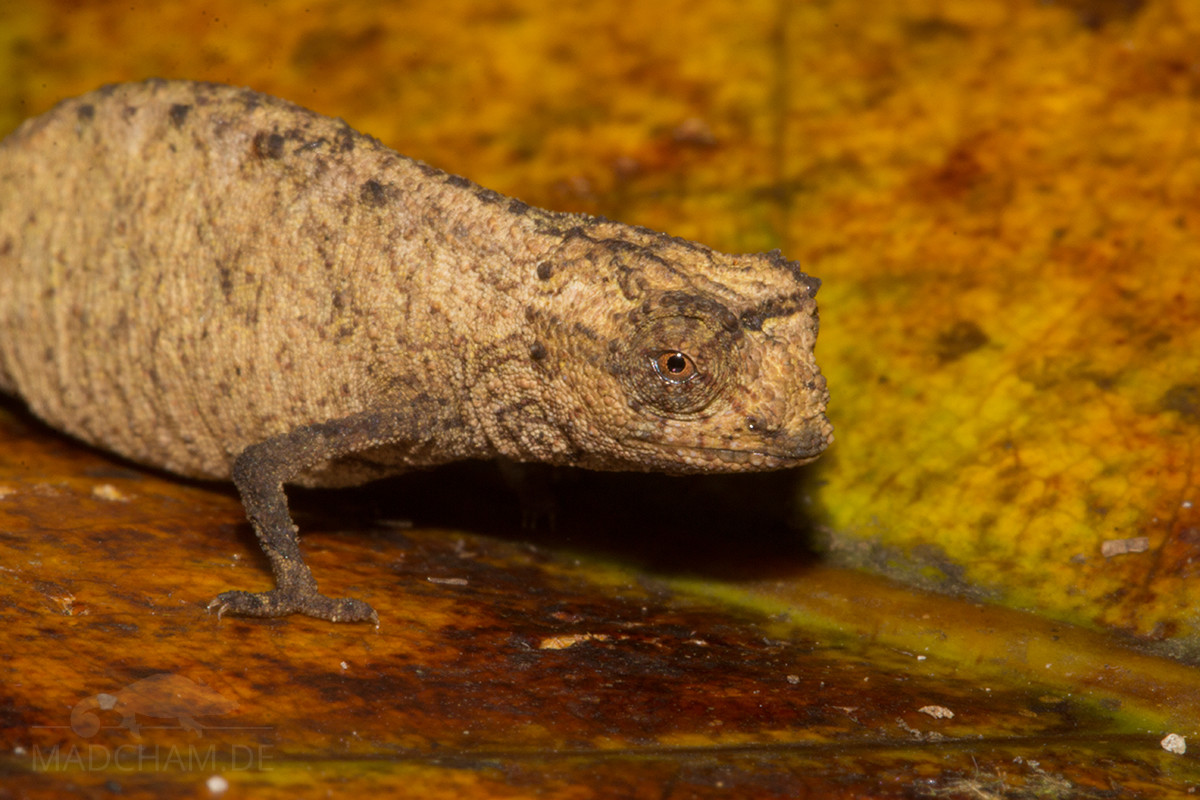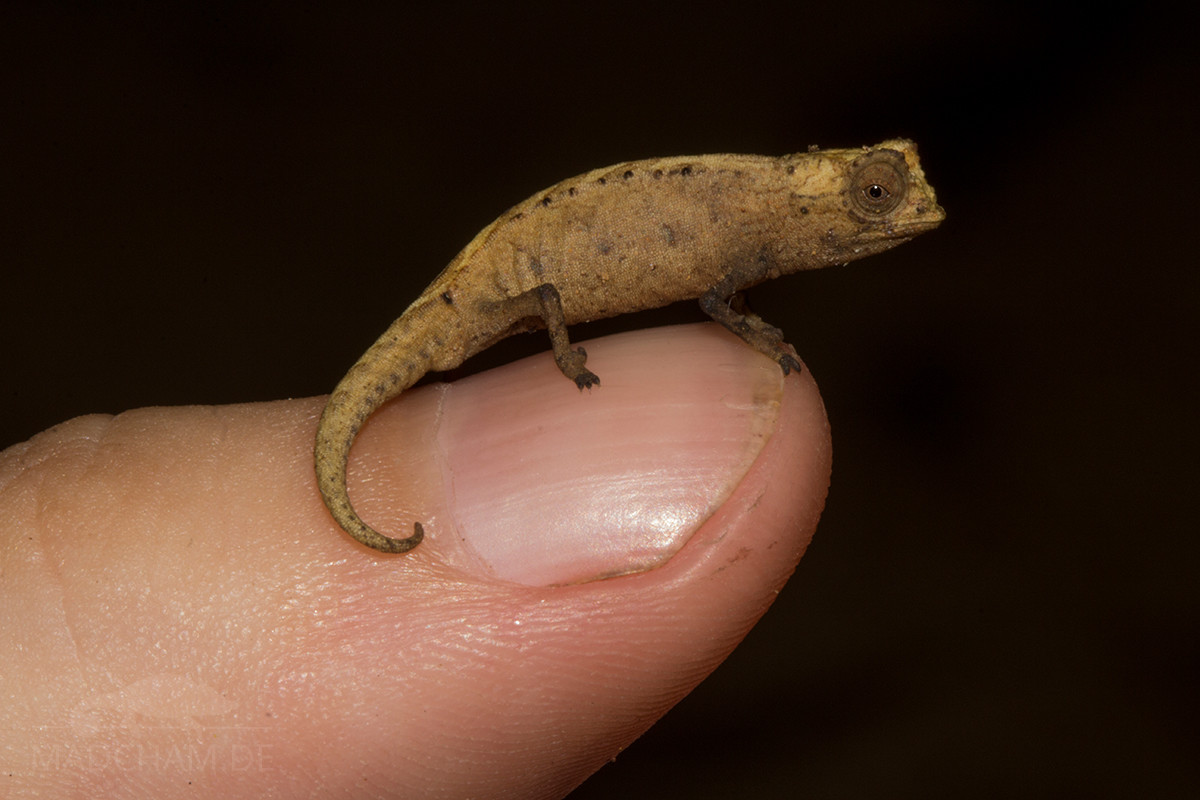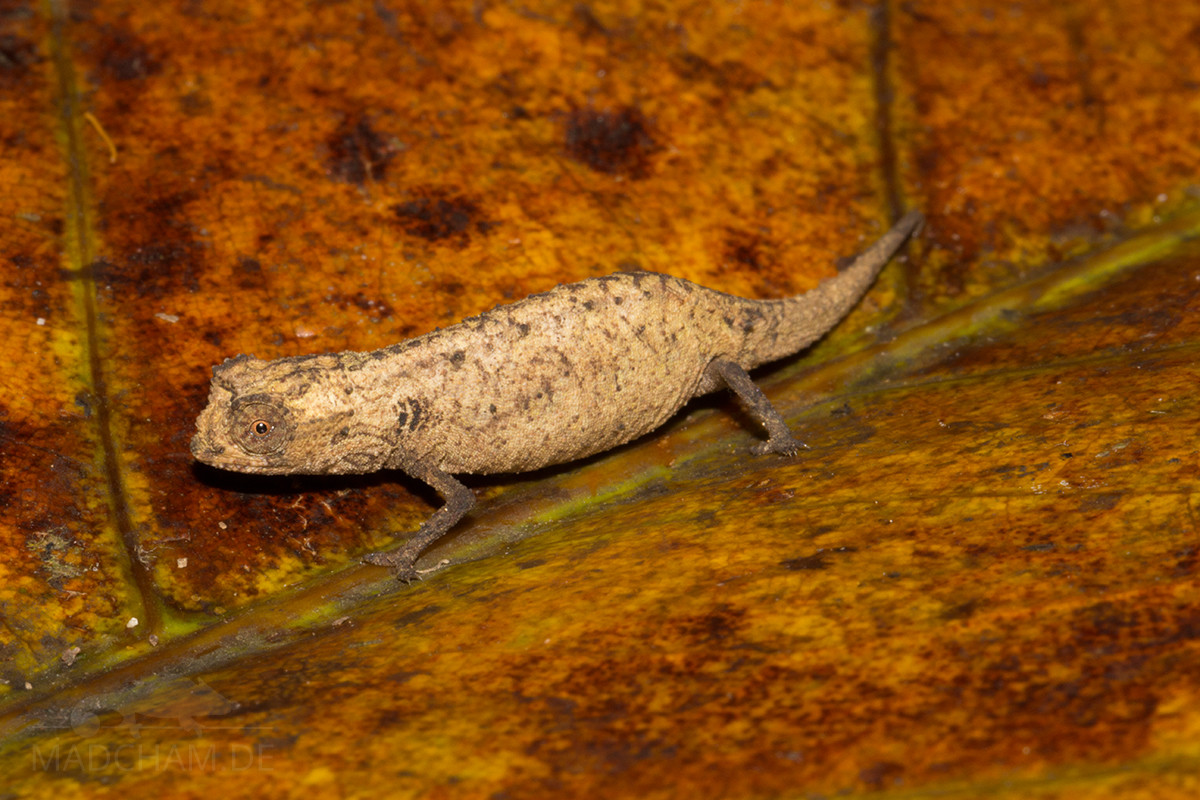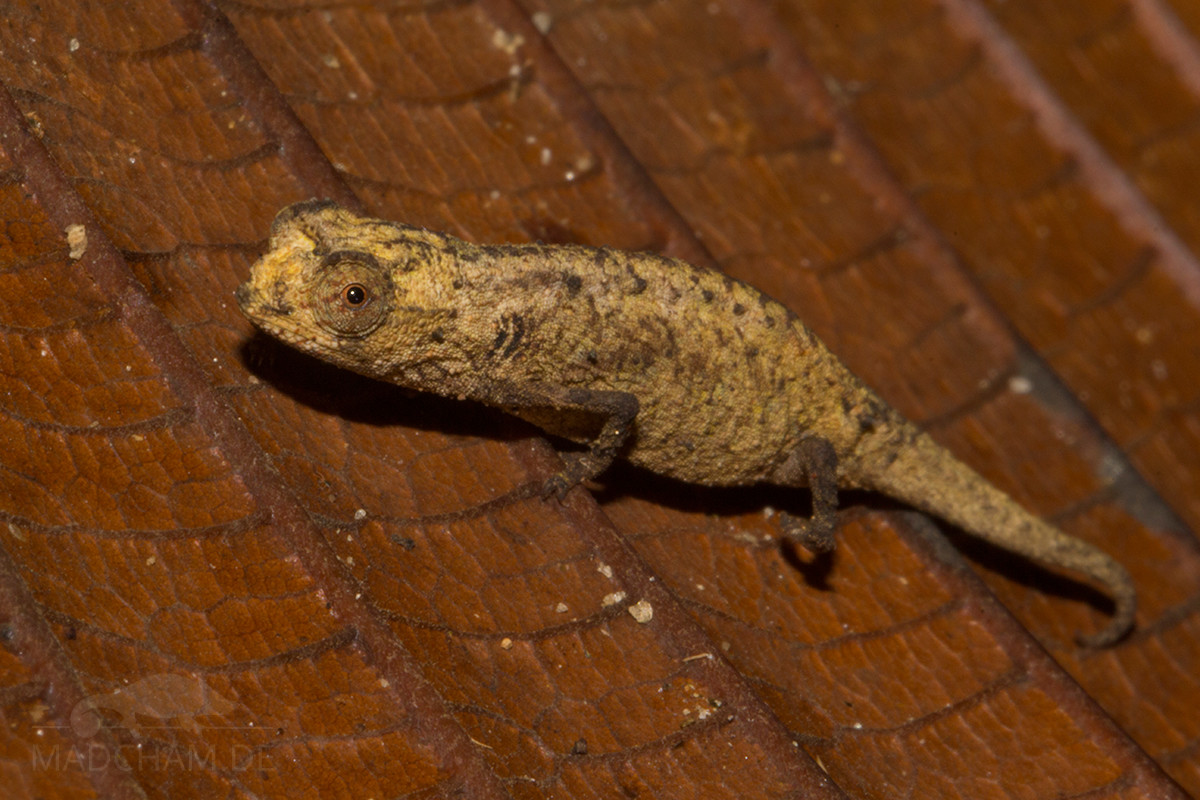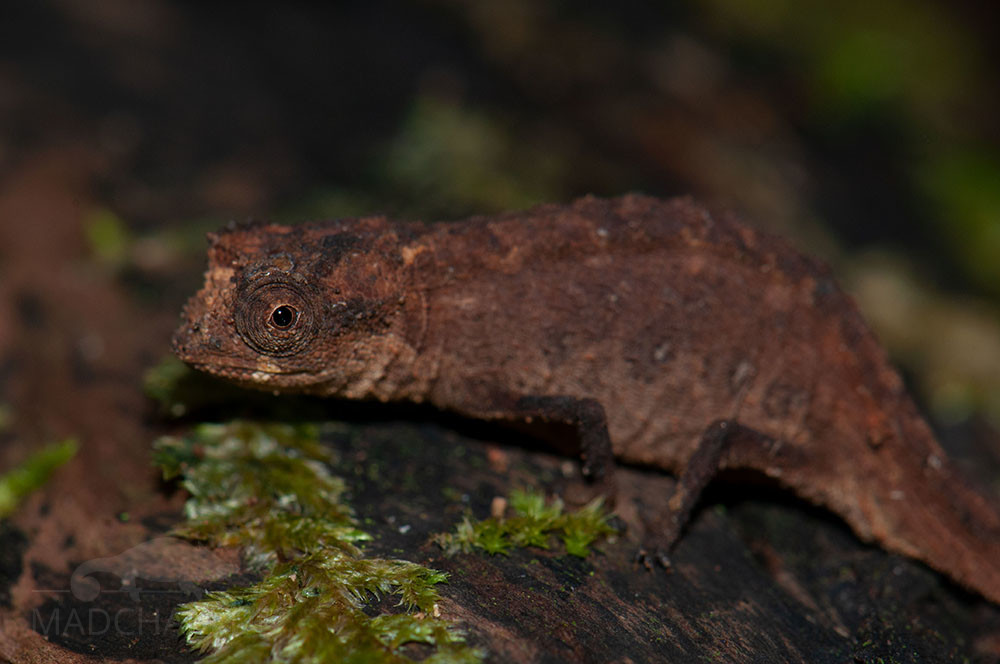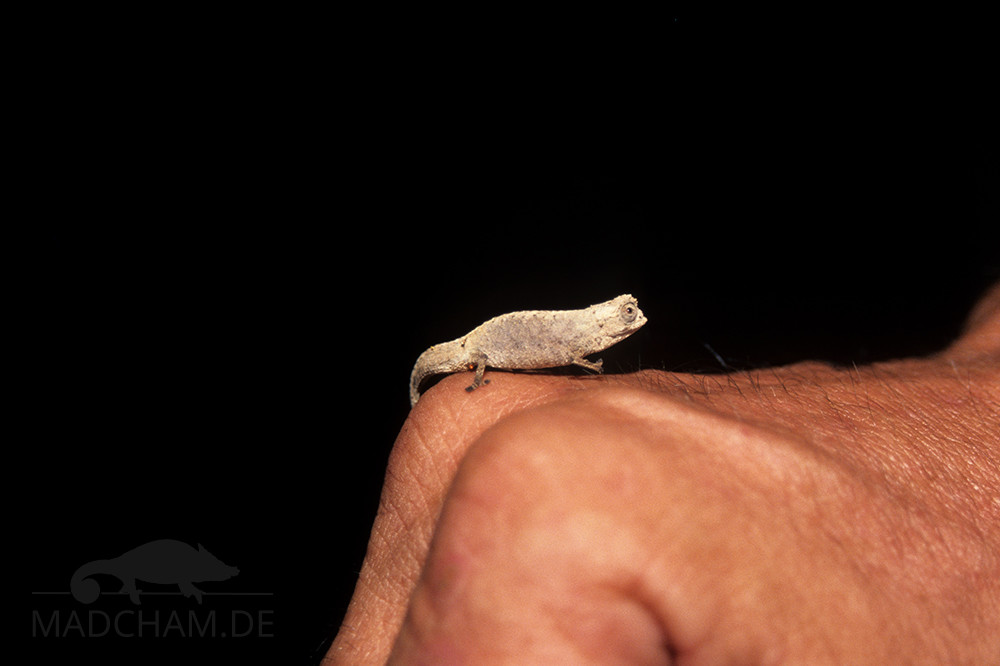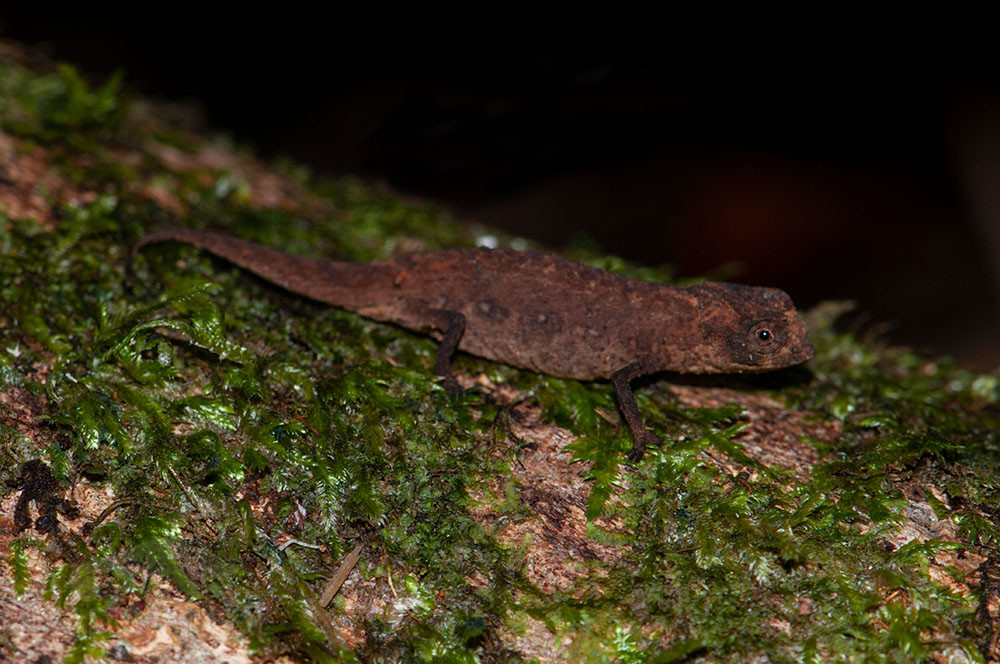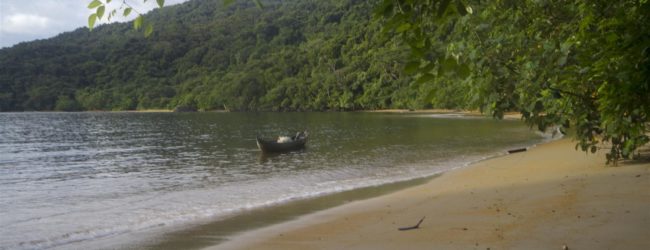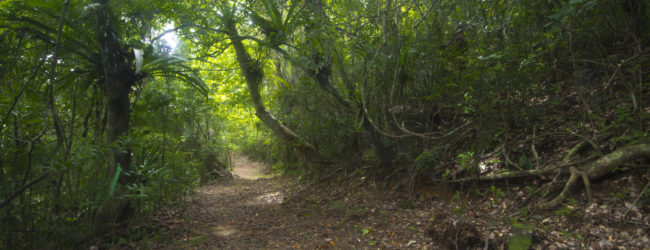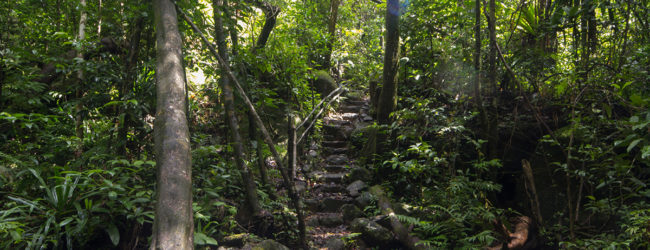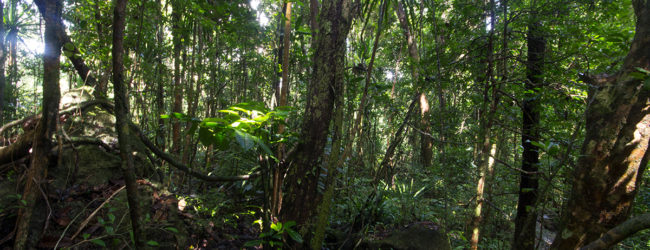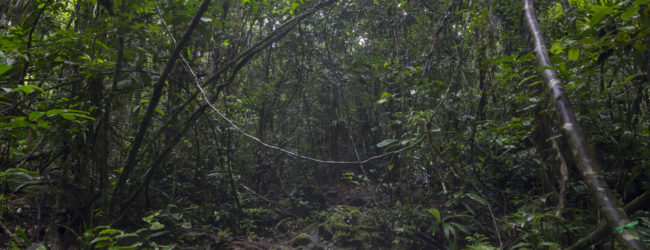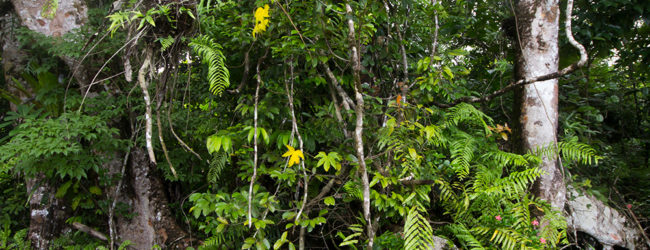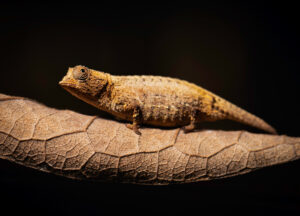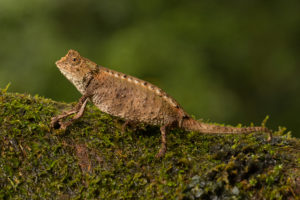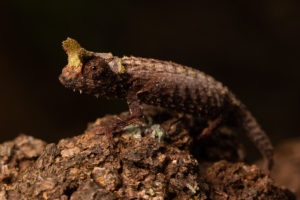no legal export possible
from 2014 to 2016 150 animals were allowed for export, in 2017 250 animals, but zero quota since 2018
First description:
Origin of the species name:
Édouard-Raoul Brygoo (later working at the Natural History Museum in Paris, France) and Charles Antoine Domergue of the then Institut Pasteur in Antananarivo, Madagascar, dedicated the species to the French naturalist and first finder of the species, André Peyriéras. Peyriéras lived temporarily in Maroantsetra in the northeast of Madagascar. In 1969, in the forest of Fantanendra, a little north of Maroantsetra, he found the animal described by Brygoo and Domergue a little later and sent it to France.
Distribution:
Brookesia peyrierasi lives in the rainforest of Madagascar’s northeast coast at the island Nosy Mangabe which is part of Masoala national park. They shall also occur in the largely unprotected Makira massif, but this could even be another species. They live in the thick foliage on the ground of dense forests and are accordingly difficult to find.
Appearance & size:
With a maximum length of 4 cm, this is a dwarf even among leaf chameleons and part of the minima group. Both genders are bright beige colored and do not wear a dorsal crest, but enlarged scales to both sides of it. The males have a bony appendage above the eye. Some individuals have a small tubercle on the hip.
| Jan | Feb | Mar | Apr | May | Jun | Jul | Aug | Sep | Oct | Nov | Dec | |
| Average temperature | 24 | 25 | 24 | 24 | 23 | 21 | 20 | 20 | 21 | 22 | 23 | 24 |
| Minimum temperature | 20 | 21 | 20 | 20 | 18 | 17 | 16 | 16 | 17 | 17 | 19 | 20 |
| Maximum temperature | 28 | 29 | 28 | 28 | 27 | 25 | 25 | 25 | 25 | 27 | 27 | 28 |
| Rain days | 26 | 23 | 25 | 19 | 17 | 18 | 21 | 21 | 16 | 17 | 20 | 24 |
We have collected the data given above over several years with thermometers and hygrometers at the finding places of the chameleons. "Average temperature" means that values of a whole month have been calculated to one average value per month. For example all measured minimum temperature values of February have been calculated to one average minimum temperature for February. In plain language, this means single peak values of a day may be a little higher or lower than the average minimum and maximum temperatures. It is possible that a location has an average maximum temperature of 29°C, but one day during that month it had 33°C or even 35°C there.
Climate on Nosy Mangabe is a very humid place. It is raining all year long with especially intense precipitation during rainy season. The rainforest of this island reaches right to the edge of the beach, and is an old forest with many huge trees and much undergrowth.
Temperatures on Nosy Mangabe are rather constant all over the year with few variation. Temperatures during daytime reach 25°C, in rainy season they might be around 30°C. Instead dry season has cooler temperatures, but only few °C less: It is still warm with around 25°C during the day. At night, temperature drops only few degrees.
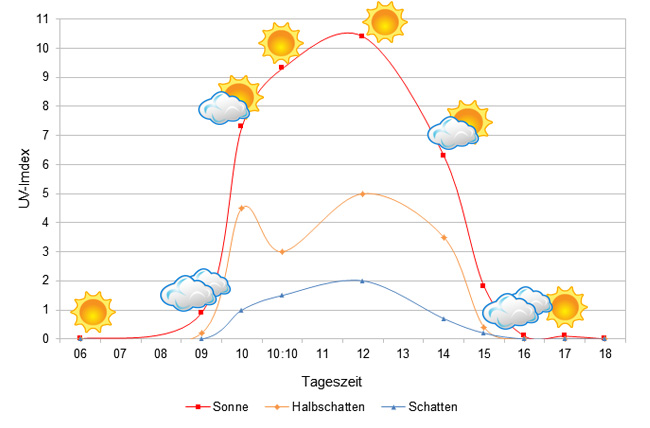
We have measured UVB data with a Solarmeter 6.5 in spring (end of March) at the peak of activity of chameleons in Madagascar. We always measured the values that a chameleon could maximally reach in its habitat.
| Jan | Feb | Mar | Apr | May | Jun | Jul | Aug | Sep | Oct | Nov | Dec | |
| Average temperature | 24 | 25 | 25 | 24 | 24 | 23 | 21 | 20 | 21 | 22 | 23 | 24 |
| Minimum temperature | 20 | 21 | 20 | 20 | 18 | 17 | 16 | 16 | 17 | 17 | 19 | 20 |
| Maximum temperature | 28 | 29 | 28 | 27 | 25 | 25 | 25 | 25 | 25 | 27 | 27 | 28 |
| Rain days | 26 | 23 | 25 | 19 | 17 | 18 | 21 | 21 | 16 | 17 | 20 | 24 |
We have collected the data given above over several years with thermometers and hygrometers at the finding places of the chameleons. "Average temperature" means that values of a whole month have been calculated to one average value per month. For example all measured minimum temperature values of February have been calculated to one average minimum temperature for February. In plain language, this means single peak values of a day may be a little higher or lower than the average minimum and maximum temperatures. It is possible that a location has an average maximum temperature of 29°C, but one day during that month it had 33°C or even 35°C there.
Several examples of a daily pattern of temperatures in Masoala in the rainy season are given below. They were recorded with data loggers in 2023.
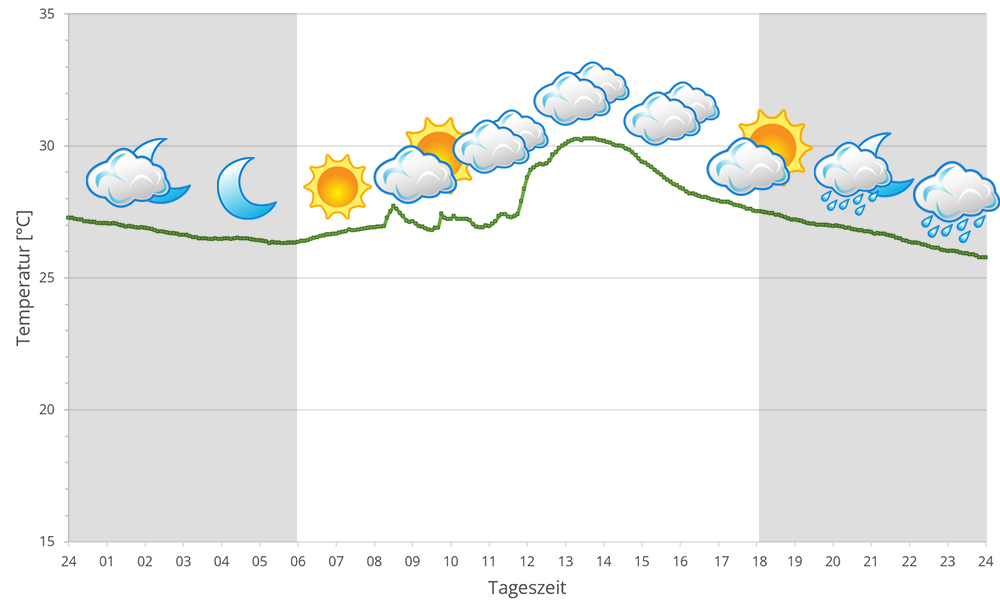
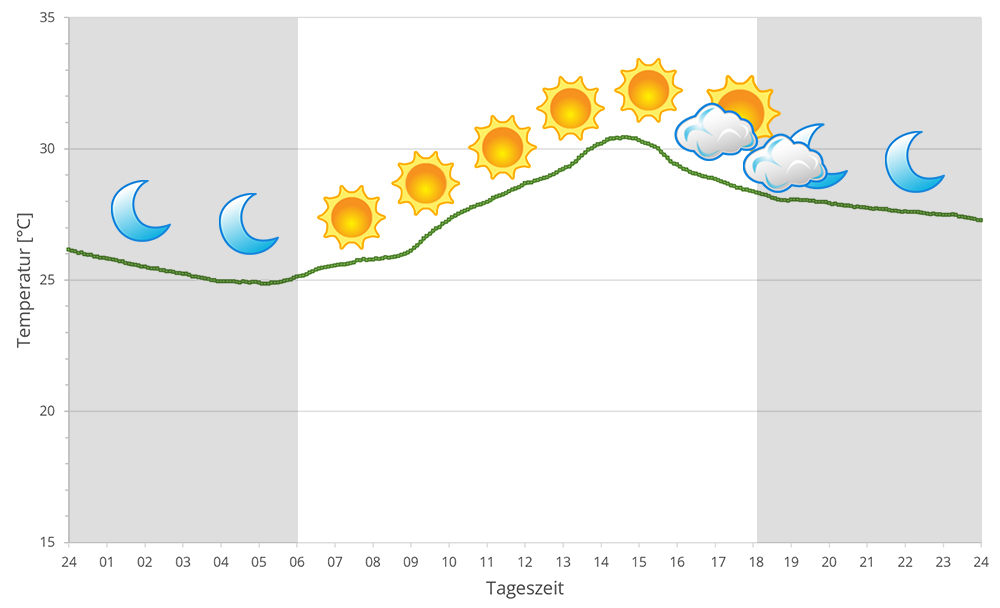
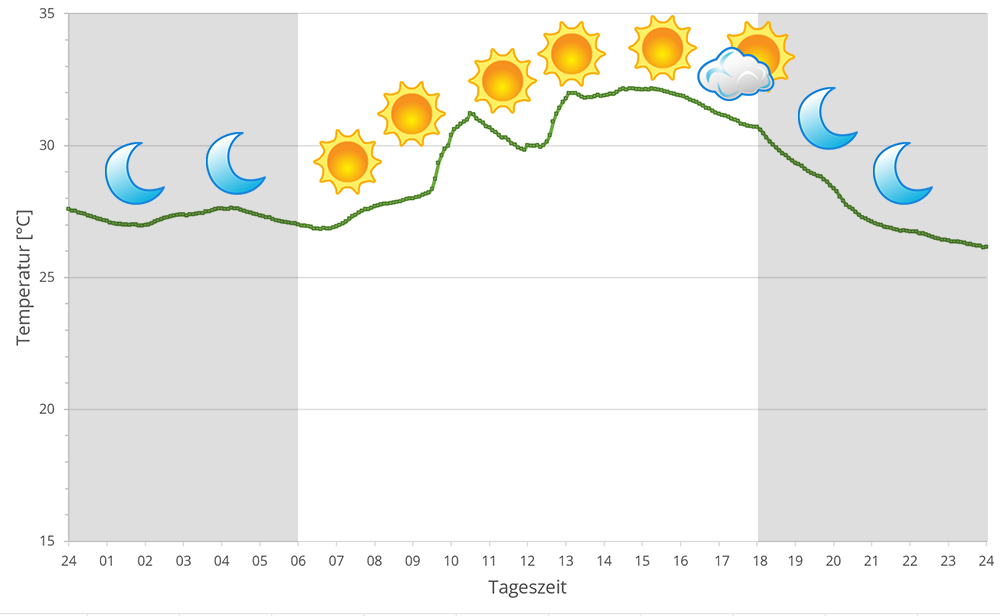
Masoala's rainforest is located at the coast with broad side to Antongil bay which behaves more like an open sea concerning climate. Accordingly, spring brings cyclones each year. During rainy season, it rains very intensively on a daily base. But also dry season is not really dry but has regular precipitation.
From October to April it is warmer than usual in Masoala, with temperatures reaching over 30°C in sunny spots. At night, temperatures drop only slightly. The rest of the year, from May to September inclusive, it is different: at night, during the dry season, temperatures plummet to 16°C at night, while at night it is still Mediterranean warm. In 2023 we measured relative humidity with data loggers on several days in Masoala during the rainy season, the data can be found below.
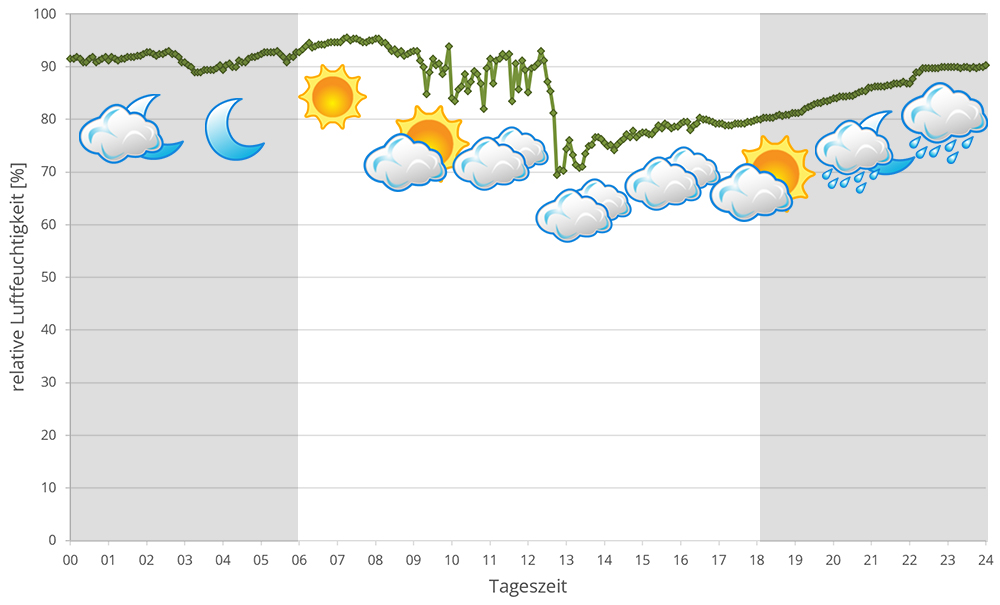
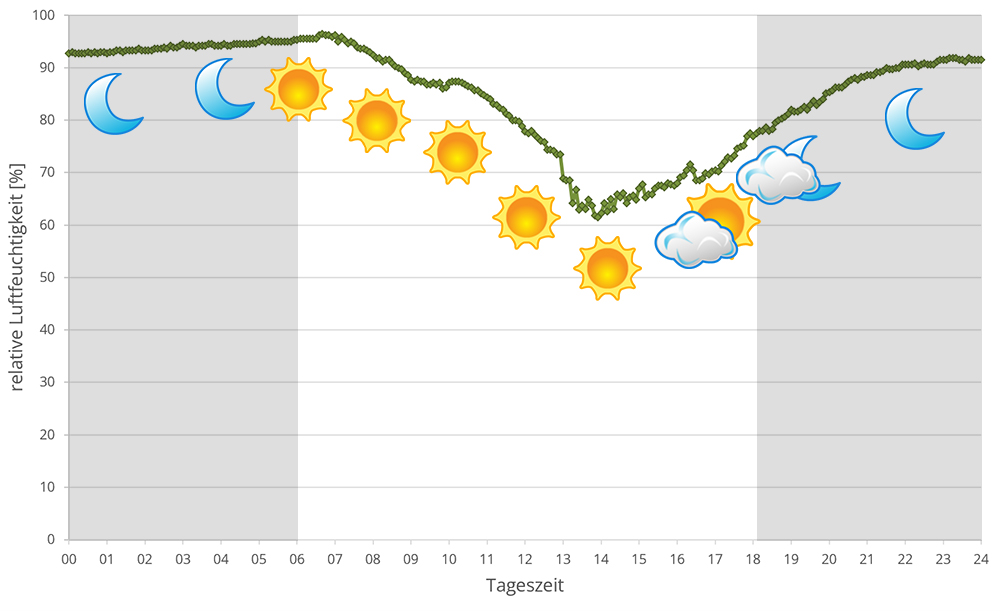
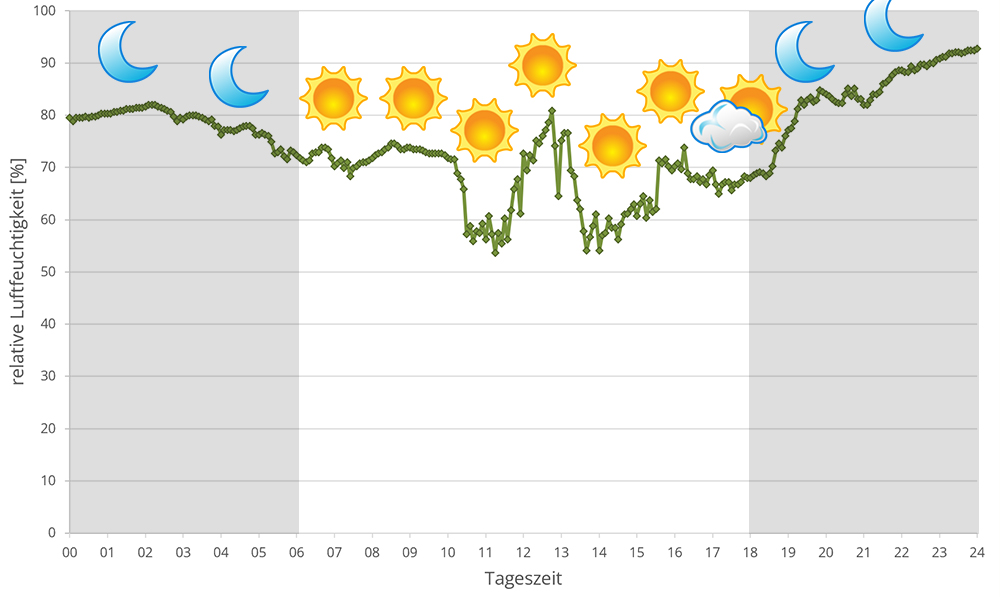
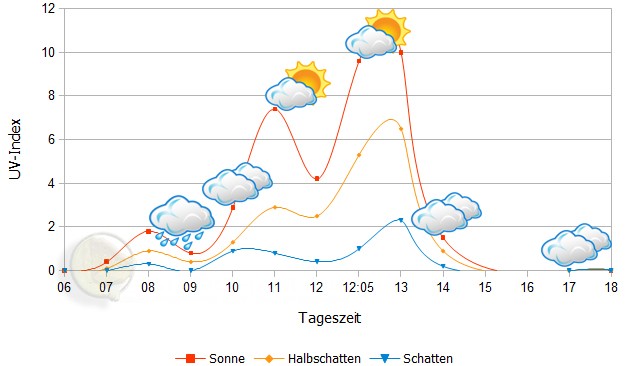
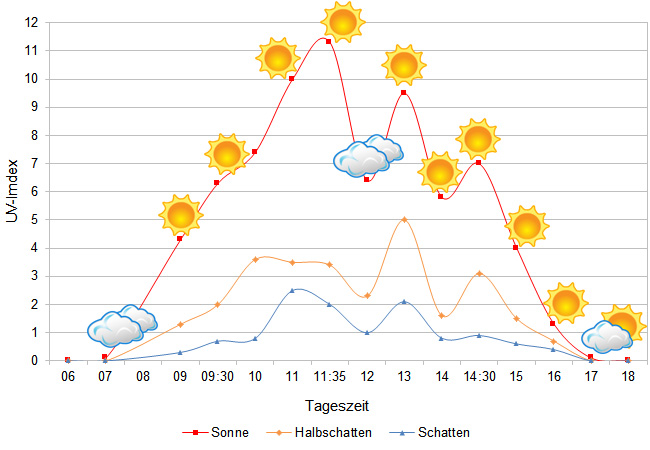 Tageszeit = day time, Sonne = sun, Halbschatten = half shade, Schatten = shade
Tageszeit = day time, Sonne = sun, Halbschatten = half shade, Schatten = shade
We have measured UVB data with a Solarmeter 6.5 in spring (end of March) at the peak of activity of chameleons in Madagascar. We always measured the values that a chameleon could maximally reach in its habitat.
In 2023, in addition to other climate data, we also measured the air pressure at the places we visited in Madagascar. The following data is from several days during the rainy season in Masoala. The X-axis shows the time of day or night. In Madagascar, the day begins around 6 am, and night falls at 6 pm. The Y-axis shows the atmospheric pressure in hPa.
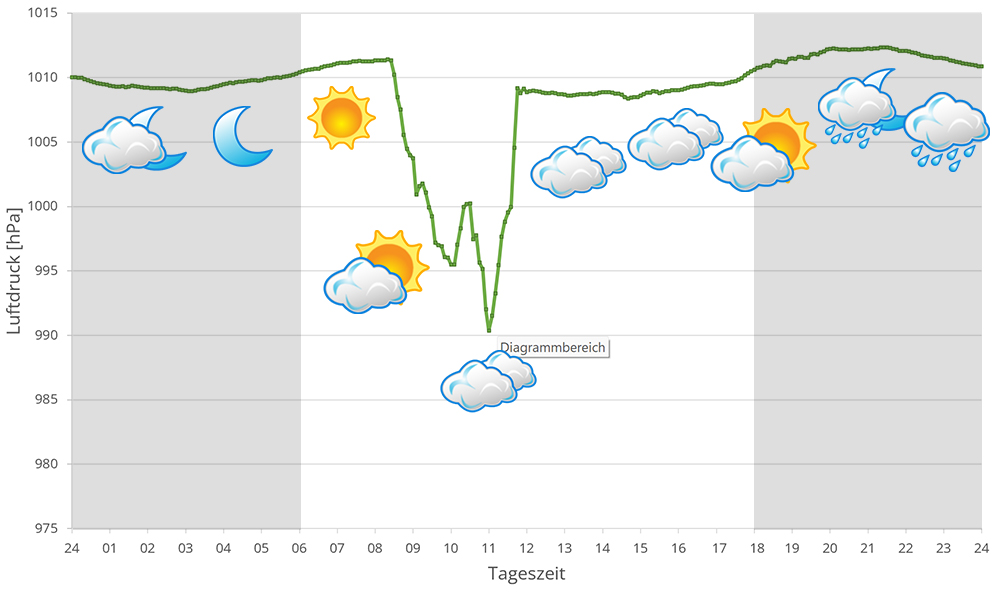
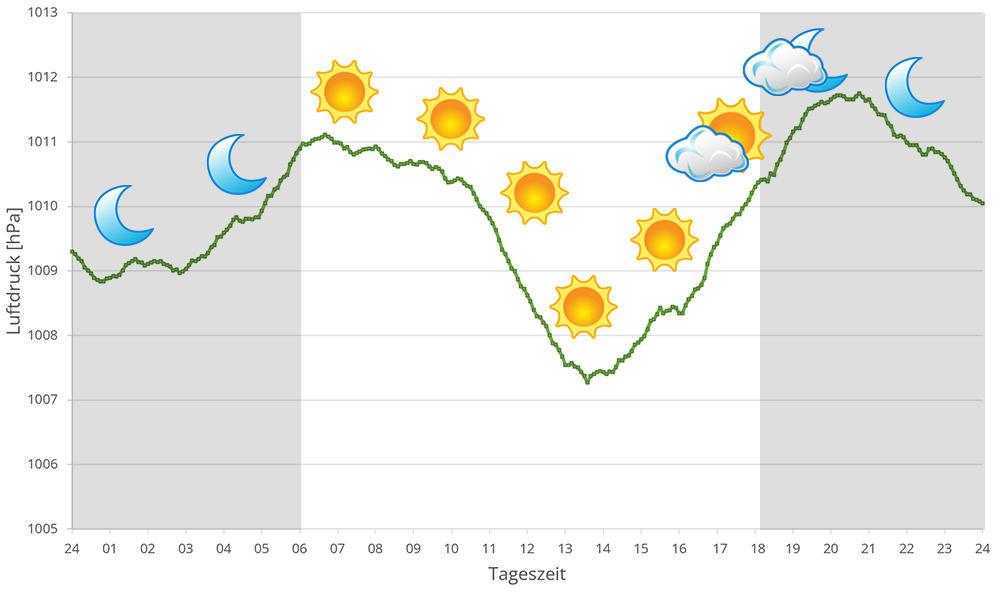
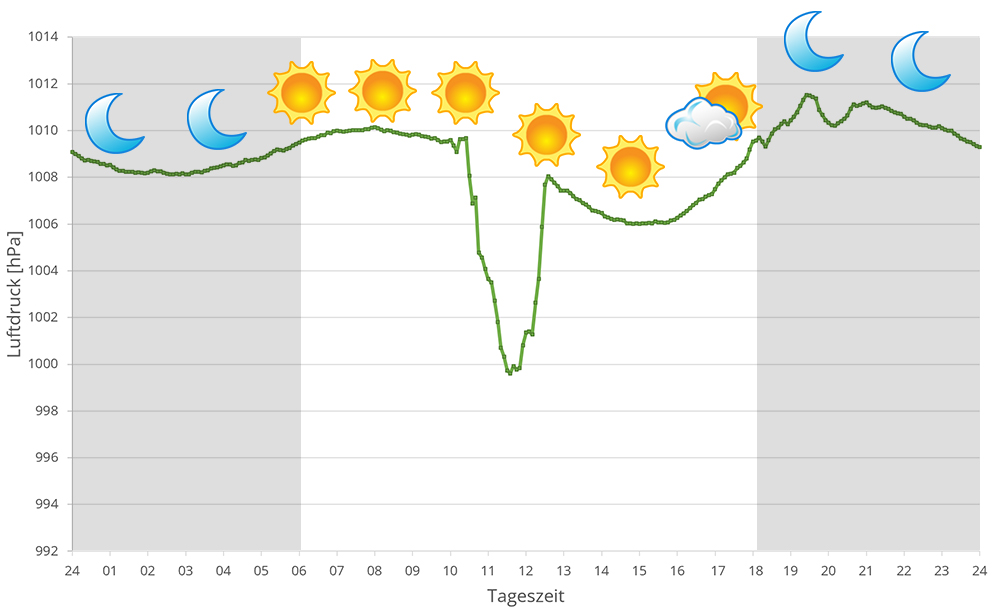
Habitat:
The following pictures show the habitat of Brookesia peyrierasi on Nosy Mangabe and in Masoala rainforest. These tiny chameleons love to live on the mossy ground between leaves, dead wood and especially on the feet of big trees. The environment is very humid all year round.

